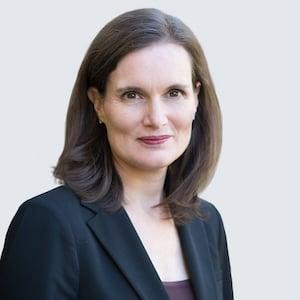The numbers sound staggering when Stacy Gray, M.D., mentions them:
“Right now there are hundreds of thousands of people at high risk for cancer who don’t know it. Tens of thousands who could benefit from targeted therapies, but won’t get them.”
The reason?
Genetic testing. Or, more accurately, the lack of genetic testing.
Ever since 2003, when scientists successfully mapped the human genome, personalized therapy based on a patient’s genetic information has become the holy grail of cancer treatment. Where once doctors depended on chemotherapy, surgery and radiation, now it is possible to analyze the DNA of a person’s tumor and use therapies designed to target the specific mutations found. In addition, by analyzing the person’s individual DNA, they may identify mutations that put that person at high risk for certain kinds of cancer. They then can be placed on screening and treatment protocols aimed at prevention.
Much of this effort depends on screening patients and their families for genetic mutations and anomalies. City of Hope leads the way here, aiming to test every new patient — more than 4,000 of them last year. “We aspire to provide universal access to sequencing patients and their tumors, here in Duarte and across our entire enterprise,” said Stephen Gruber, M.D., director of City of Hope’s Center for Precision Medicine.
Sadly, very few hospitals and smaller facilities can match that. Very often testing is unavailable or unaffordable, patients aren’t aware of their testing options, and their doctors lack the training to administer DNA tests and, more importantly, properly understand the results. As a result, “Only half the people who could benefit actually get tested,” said Gray.
Those “knowledge gaps” haunt Gray. She speaks with the intensity of someone driven to understand why such gaps and barriers exist and find ways to fix them. And now she has the platform to get it done.
Gray is City of Hope’s new director of Clinical Cancer Genomics, a division focused on “identifying people and families with elevated cancer risk,” she explained, “and then helping to manage or even eliminate that risk.” The job feels like a “natural progression” for Gray, who joined City of Hope in 2016 to concentrate on social and behavioral research, population science and precision medicine, where “we use genetic information to create a precise therapeutic plan for the patient.”
Making a Difference
Long before City of Hope, though, Gray, was thinking about new and better ways to make a difference.
Growing up just outside Minneapolis, Minnesota, Gray discovered a love of biology and a strong desire to help people. At college, she began to realize that a career in medicine would fulfill those goals, a realization made stronger by personal loss, when Gray’s mother succumbed to cancer.
The next turning point came in medical school. A research project convinced Gray that, while helping people one at a time was admirable, she was really “hooked” on aiding entire populations. She found the vehicle to do so in a fellowship with “an amazing mentor,” Olufunmilayo I. Olopade, M.D., director of the Center for Clinical Cancer Genetics and Global Health at the University of Chicago. “Dr. Olopade is a pioneer in the field,” said Gray. “She sparked my interest in genetics.”
Channeling that spark into a high-profile leadership role at City of Hope is something Gray didn’t actively seek (“I already had a full plate,” she said.) But, seeing the need to expand the department and close those knowledge gaps, Gray felt ready to take on the role, and colleagues are happy she did.
“She has all the right stuff,” said Kathleen R. Blazer, Ed.D., M.S., about her new boss. Blazer oversees the genomics education program, training physicians and other health professionals. She calls Gray a “compassionate servant-leader” who listens well, sees to the needs of her team and wants to be a force for positive change. “It’s never about her,” added Blazer. “It’s always about the mission.”
Gray smiles when she hears that description, and in the next breath validates it. “This job is a fabulous opportunity for mentorship,” she said. “I want to figure out how to empower our people to excel and thrive in areas they’re interested in.”
After a year on the job as interim director, Gray hopes to bring growth to all three areas within her purview. These include:
1. Clinical Care: Gray wants to change the global care model to bring genetic testing to more patients in more places, and make it more routine. Right now most facilities don’t incorporate genetic information into a patient’s electronic medical records. Meanwhile, almost every day researchers discover additional mutations that may point to cancer in the future, with many of them actionable now. Patients need to know. “Access to information is a major driver,” she said. Gray intends to “harness communication tools to improve care delivery.”
2. Physician Education: Doctors, especially those without access to comprehensive cancer centers, need strong tools to learn the intricacies of genetic testing for their patients. They also need a framework for keeping current with the constantly advancing knowledge base. “There’s an explosion in need,” said Gray, and here she praises Blazer’s education team, which to date has trained over 1,000 alumni and pioneered “an internationally recognized program of scalable, bite-sized education modules” and a support system for health professionals everywhere.
3. Scientific Investigation: The data is getting more complex: “We’re seeing a much broader number of patients with mutations who don’t classically fit current models,” she explained. “We need to sort this all out.” She’s also counting on colleagues like oncologist Kevin McDonnell to help integrate vast amounts of data generated by tumor boards as well as testing. At the same time, Gray maintains a personal research portfolio focused on “tools to help patients and providers.”
The challenges, Gray understands, are formidable. At stake is nothing less than tomorrow’s cancer care. “We strongly believe,” she said, “that this is the future of oncology.”

